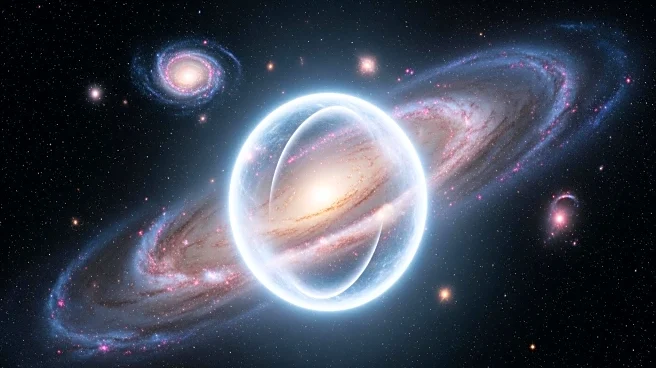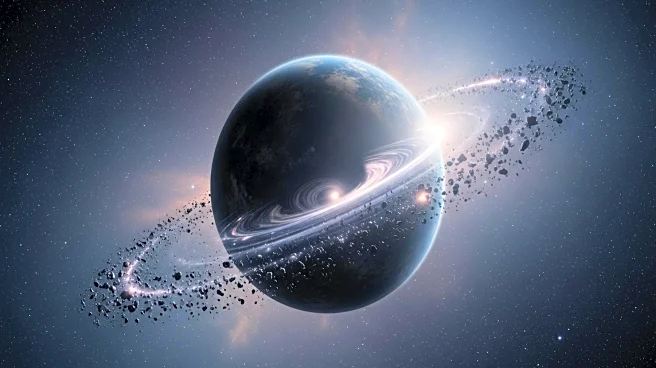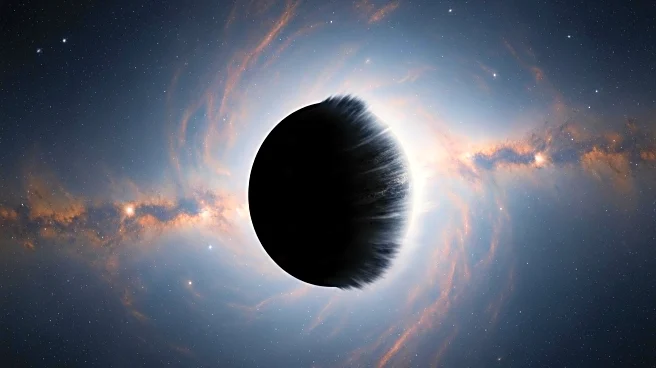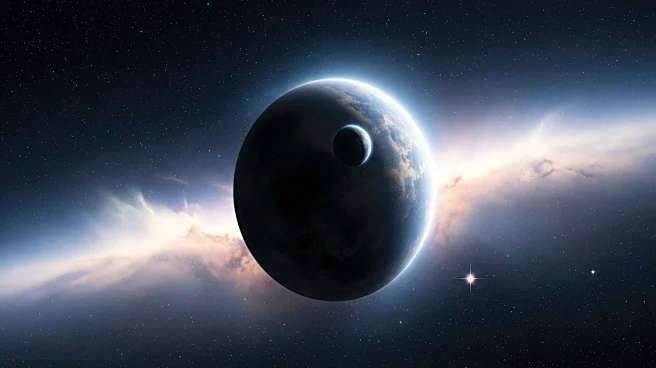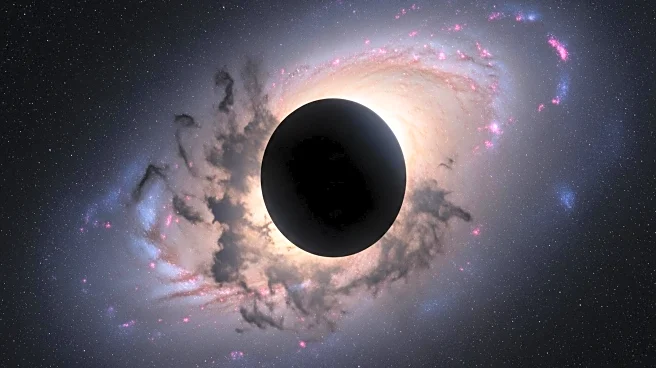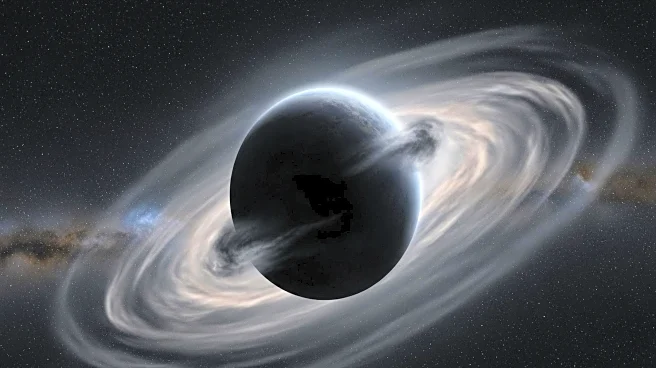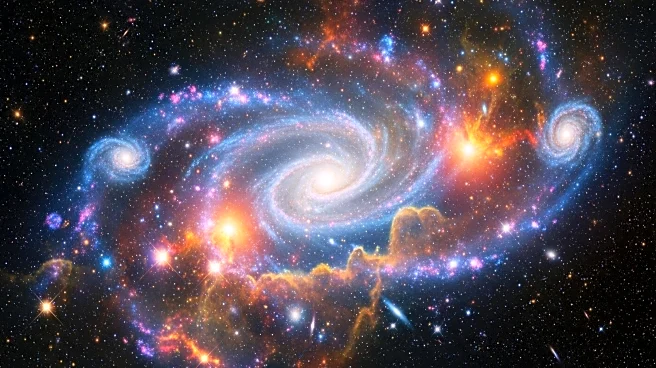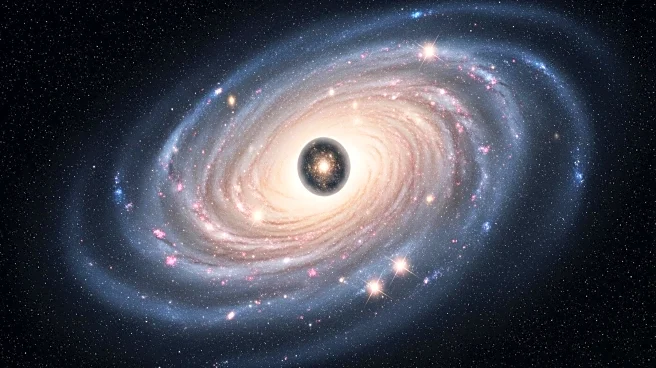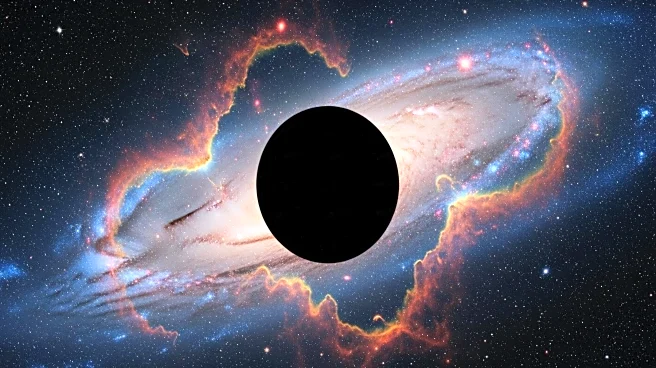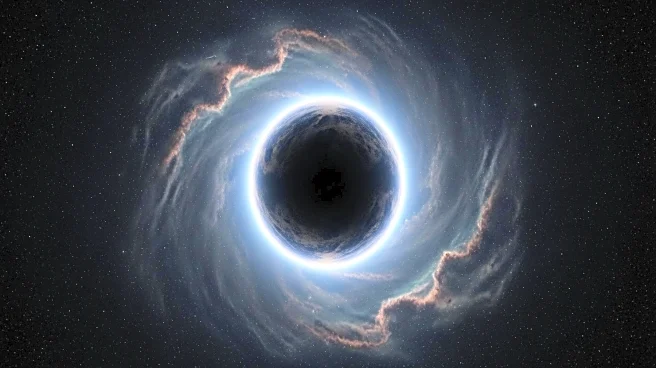What's Happening?
Astronomers have observed a rogue planet undergoing a significant growth spurt, consuming gas and dust at an extraordinary rate of six billion tons per second. This discovery was made using the European Southern Observatory's Very Large Telescope (ESO's VLT) and highlights the dynamic nature of rogue planets, which do not orbit stars but float freely in space. The planet, named Cha 1107-7626, is located about 620 light-years away in the constellation Chamaeleon and has a mass five to ten times that of Jupiter. The study, led by Víctor Almendros-Abad from the Astronomical Observatory of Palermo, reveals that the planet is still forming, fed by a surrounding disc of gas and dust. The accretion rate of this material onto the planet has increased significantly, marking the strongest growth rate ever recorded for a planetary-mass object.
Why It's Important?
The discovery of this rogue planet's rapid accretion challenges previous notions of planetary stability and formation. It suggests that some rogue planets may form similarly to stars, as bursts of accretion have been observed in young stars. This blurs the line between stars and planets, offering insights into the earliest formation periods of rogue planets. The findings also indicate that even low-mass objects can possess strong magnetic fields capable of driving such accretion events, a phenomenon previously observed only in stars. This research could lead to a better understanding of the formation and evolution of planetary-mass objects and their potential similarities to stars.
What's Next?
The study opens up new avenues for detecting and studying free-floating planets, which are typically difficult to observe due to their faintness. The upcoming Extremely Large Telescope (ELT) by ESO, with its powerful instruments and giant main mirror, could enable astronomers to uncover and study more of these lonely planets. This could help scientists understand how star-like these objects are and provide further insights into their formation processes. The research team plans to continue exploring the accretion processes and magnetic activity of rogue planets to deepen our understanding of their nature.
Beyond the Headlines
The discovery of water vapor during the accretion episode, a phenomenon previously observed in stars but not in planets, suggests that the chemistry of the disc around the planet changes during these events. This could have implications for understanding the environmental conditions and potential habitability of such planets. The study also raises questions about the origin of rogue planets, whether they are the lowest-mass objects formed like stars or giant planets ejected from their birth systems.

